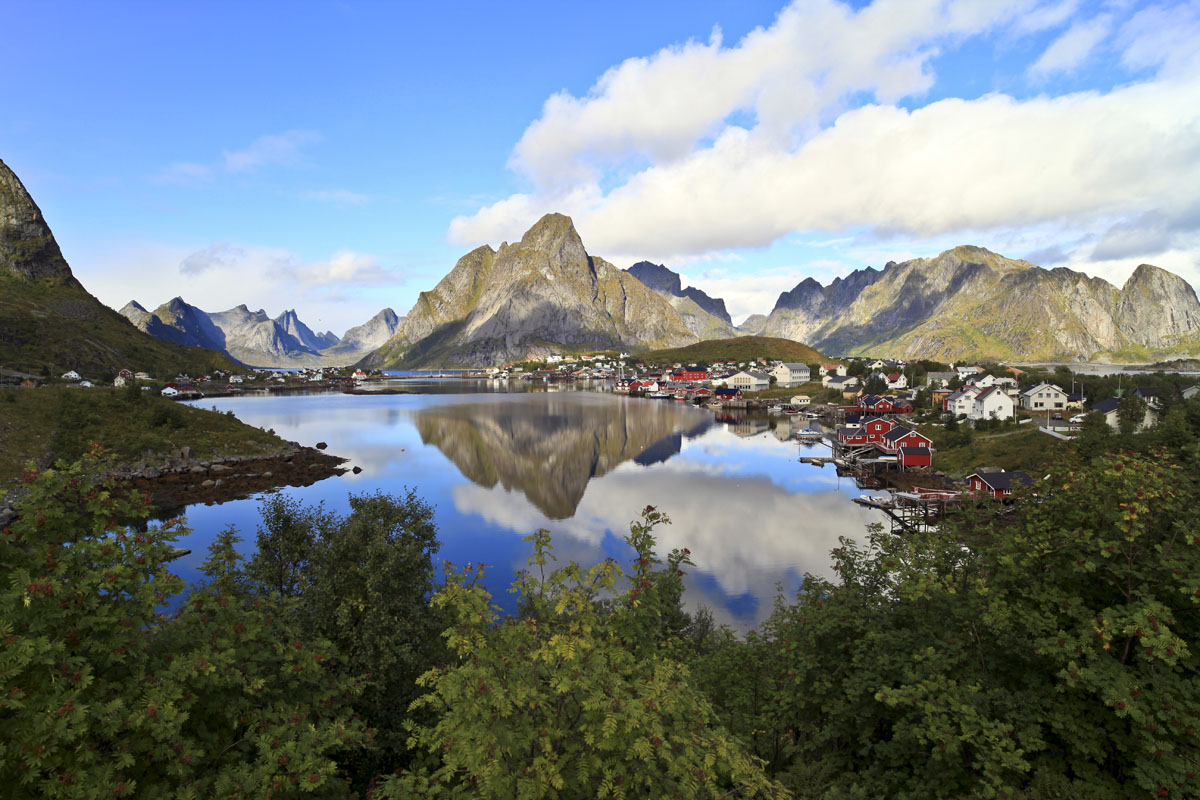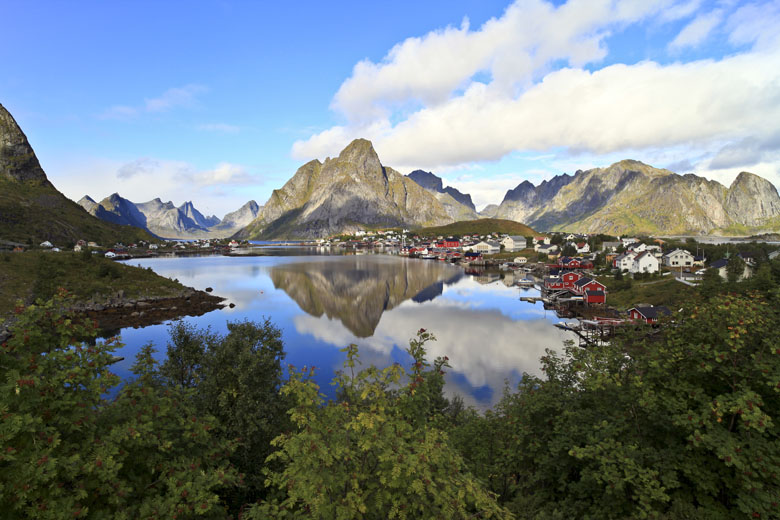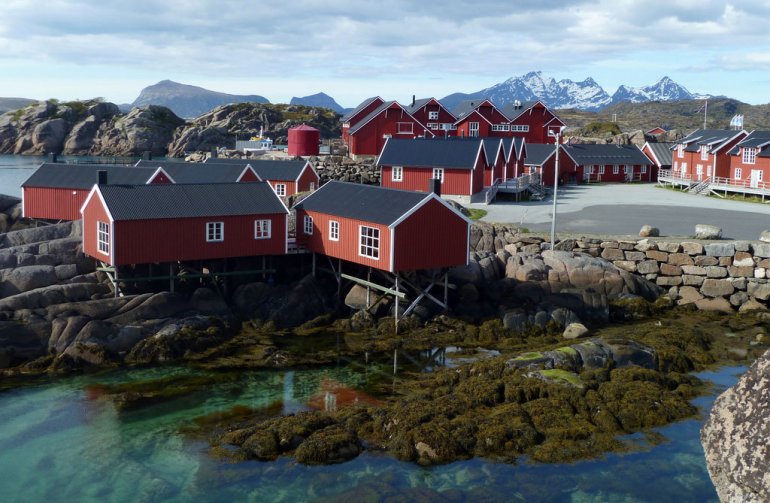

David Wilkinson


David Wilkinson
Distance Above the Arctic Circle: 170 kilometers
Number of Islands: Seven. Five main islands (Austvågøy, Gimsøya, Vestvågøy, Flakstadøya, and Moskenesøya) are connected by the E10 scenic route and two (Værøy and Røst) and accessible by ferry from Moskenes
Villages Not to Miss: Henningsvær, Reine
Getting to Lofoten: Fly from Oslo to Svolvær (SVJ) or Harstad/Narvik (EVE), or take the ferry from Bodø to Svolvær or Moskenes
Where to Stay: Rorbuer, the colorful fishermen’s cabins converted into accommodations for tourists
Norway’s Lofoten Islands are referred to as the Lofoten Wall because, quite literally, they are vertical rows of granite shooting out of the Arctic Sea. A number of colorful fishing villages hug the shoreline and a majority of the inhabitants still depend for their livelihood on the winter cod season.
For travelers, the Lofoten Islands are a stunning place to visit. The traditional red huts (rorbuer) once used to house the annual influx of fishermen have been converted into unique accommodations for travelers. What is more, the Gulf Stream creates what is thought to be the largest temperature anomaly relative to latitude anywhere in the world. The summers are pleasant and the winters are suprisingly mild.
The Lofoten archipelago is composed of seven principal islands arching off mainland Norway over 100 kilometers above the Arctic Circle. 130 kilometers of scenic road, the E10, connects the five easterly islands, and the final two, Værøy and Røst, are accessible by ferry.
Svolvær is the gateway to the islands; thirty minutes down the road is the picturesque fishing village of Henningsvær, home to some of the most well-preserved architecture of the traditional Norwegian fishing villages. Henningsvær consists of a number of islets spread peacefully among the waters of Vjestfjord, and the bridge connecting the village to the main island Austvågøya was not constructed until 1981. As a result, this relic was spared from the concrete building era of the 1960’s and 70’s.

Situated at the base of dramatic peaks, Henningsvær doubles as an adventure capital and is home to the North Norwegian School of Mountaineering, a hybrid climbing institution, hostel, and travelers bar. The Lofoten Islands are among the world’s renowned climbing destinations, and the School offers everything from a ‘Try It!’ day to a demanding ascent of Norway’s national mountain, Stetind. Moreover, Henningsvær is considered to be the Lofoten’s liveliest fishing village and the artistic heart of the islands, home to quirky cafes, restaurants, and the Hus Gallery collection of area painters.
The landscape continues to build in stature as the road winds west, and some of the most dramatic mountain scenery on the Lofoten Islands—and anywhere—is found on Moskenesøya, the westernmost island connected by the road E10. Here lies Reine, the almost fictive fishing village that is sleepier than Henningsvær but with an even more surreal setting. Reine makes a terrific base for the multitude of hiking trails on Moskenesøy and is home to what may be the Lofoten Island's best rorbuer (Reine Rorbuer). It’s also great for kayaking, biking, and the panorama culminating the steep scramble up Reinebringen.
Whatever your reason for visiting the Lofoten Islands, take the time to enjoy simply being there. There are ample opportunities for getting outdoors and exploring, visiting fishing villages, and experiencing the midnight sun (from the last week in May through the first week in July). But the best part may be looking around and trying to figure out how there can possibly be such a place.